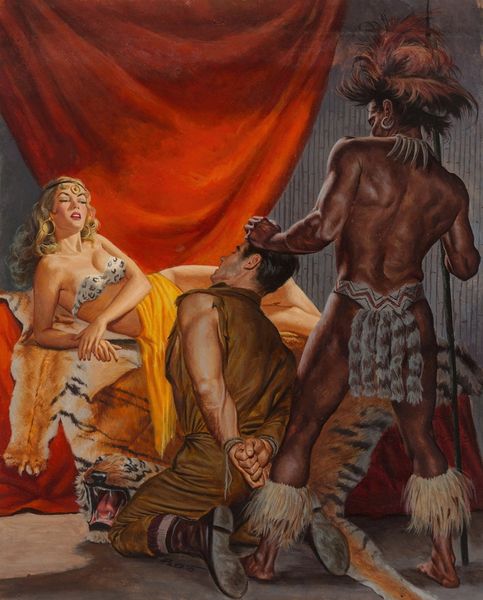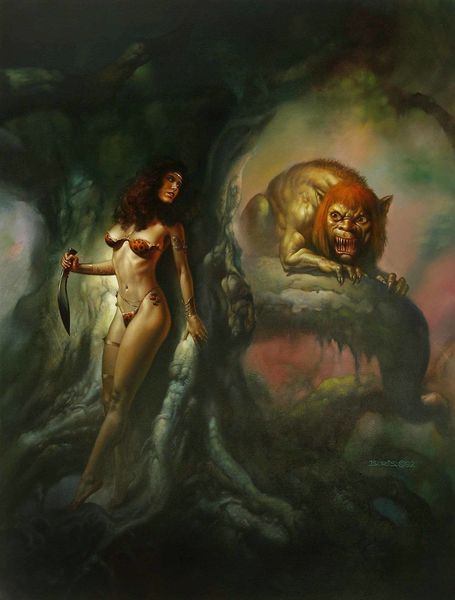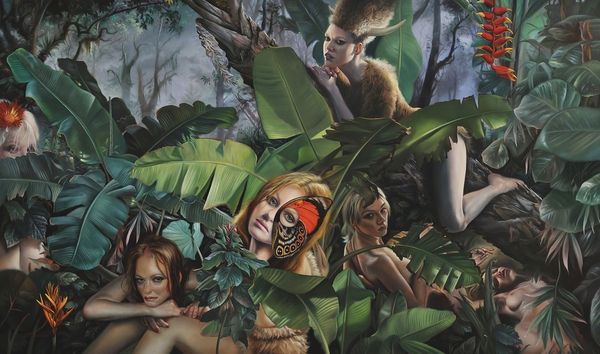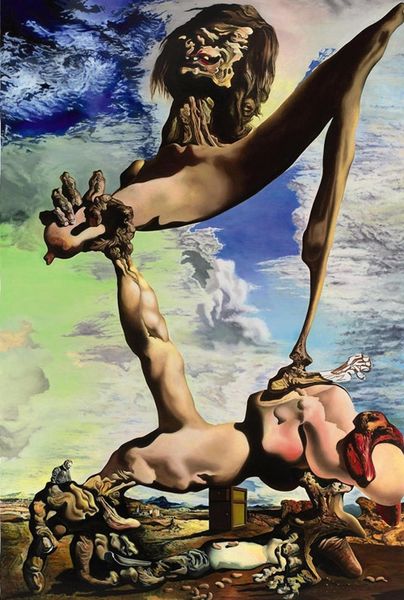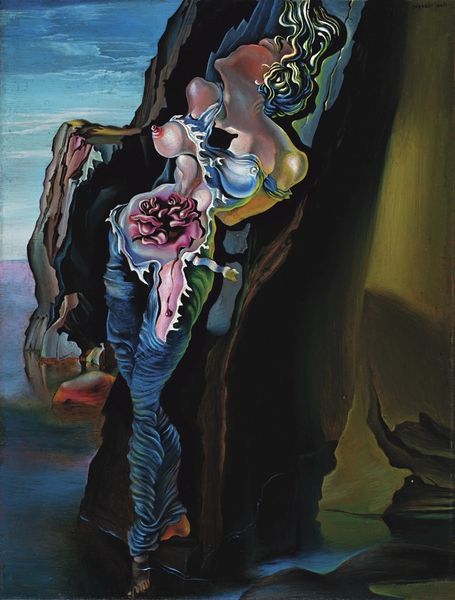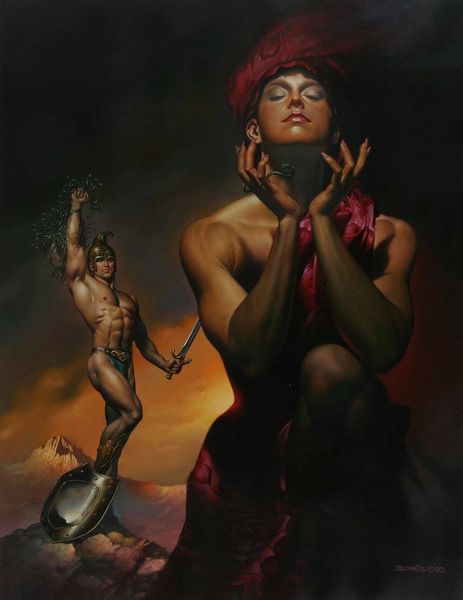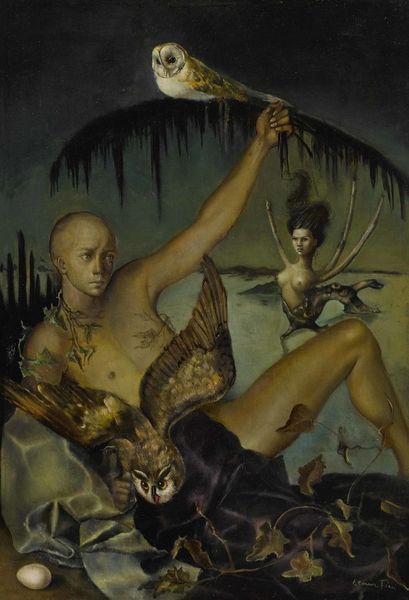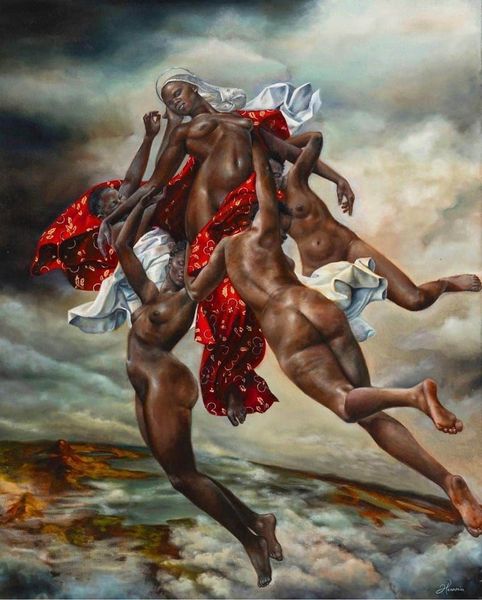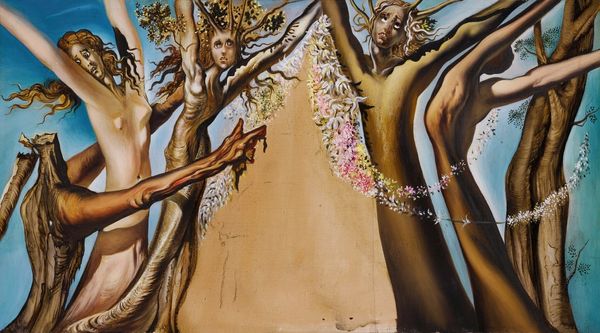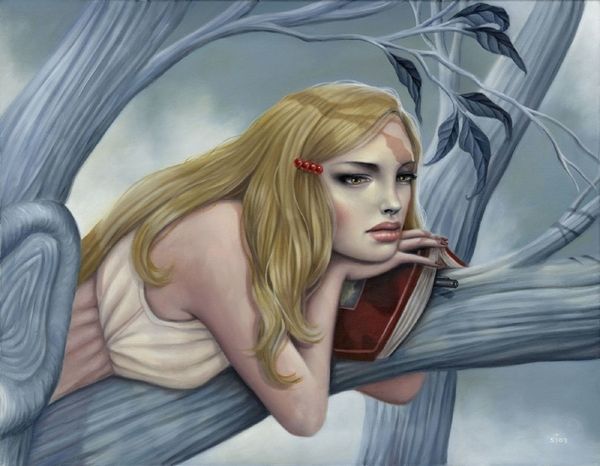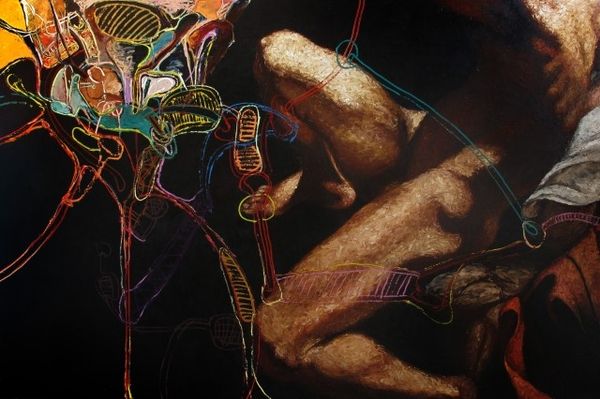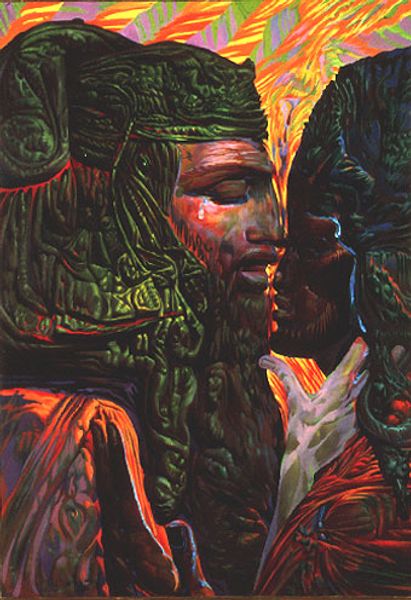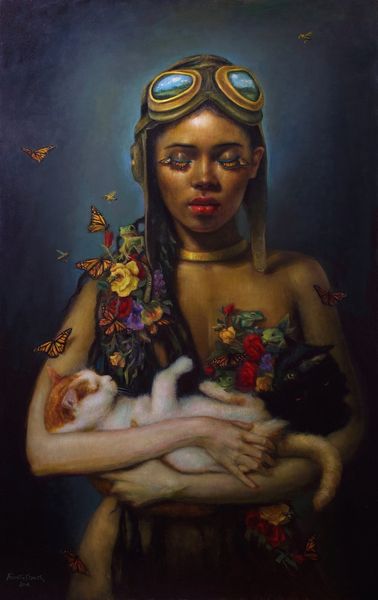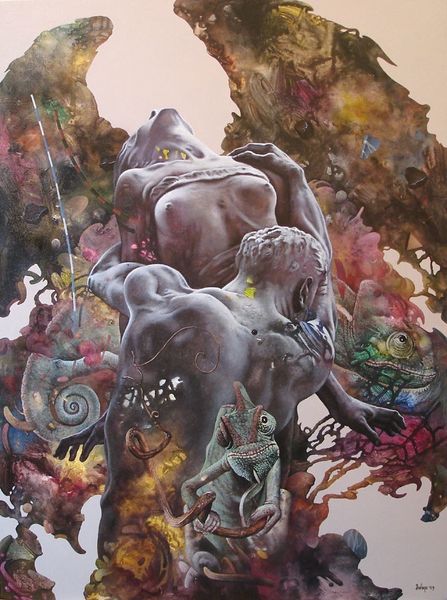
painting, oil-paint
#
portrait
#
narrative-art
#
painting
#
oil-paint
#
figuration
#
oil painting
#
naive art
#
orientalism
#
history-painting
#
academic-art
#
erotic-art
Copyright: Modern Artists: Artvee
Curator: This is Victor Prezio's "Captured" from 1959. An oil painting showcasing quite a dramatic scene. Editor: It certainly is dramatic! My first impression is... kitsch? A blend of adventure and pulp. The colour palette is really driving the lurid vibe. Curator: Absolutely. Let's delve into the composition. Prezio presents us with a central female figure being carried—or perhaps captured, as the title suggests—by two men in a dense jungle setting. Above them looms an enormous, cracked stone head, almost like an ancient idol. What semiotic layers do you discern in this assembly of signs? Editor: Well, looking at materiality, the brushwork seems fairly standard, perhaps leaning towards commercial illustration. But the subject matter! It evokes classic exploitation film posters. I'm more interested in the context that allowed something like this to be produced and circulate, seemingly without significant artistic claims. Where does Prezio fit into the broader artistic and social fabric? Curator: The treatment of light and shadow lends significant depth to the jungle background and brings forward the foreground. This contrast forces you to observe not only the drama, but the detail rendered. And the style evokes that sense of idealized beauty so popular in academic art. The figures are archetypes in their postures and implied motivations, so what does this reveal about the themes? Editor: To me, the labor involved in creating the narrative – constructing race, gender, desire – all comes from somewhere. We can trace its origin to cinema. Cheap novels. Commercial pressures for hyper-visible content that borders on lurid. Where Prezio takes time rendering details is really on the head! Curator: That giant stone head provides a powerful symbol. Its weathered, fractured condition might represent forgotten history. An allusion to exotic narratives prevalent during that period. And it certainly impacts how one experiences the painting through historical allegory and symbol. Editor: True, but the actual *doing* of making such an artwork involves decisions informed by the demands of its probable context – who buys these, where are they displayed, how do they get reproduced? The social implications seem more potent when discussing material conditions of labour. Curator: Perhaps, and by deconstructing the forms, light and the narrative devices employed by Prezio we can understand why and how its themes remain relevant to academic conventions within narrative figurative work. Editor: Agreed. Thinking about art's impact across these realms is vital if one is trying to examine not just what appears, but how art makes meanings through these forms as well. Curator: A painting rife with details. Editor: Absolutely! Food for material and formal thought.
Comments
No comments
Be the first to comment and join the conversation on the ultimate creative platform.
